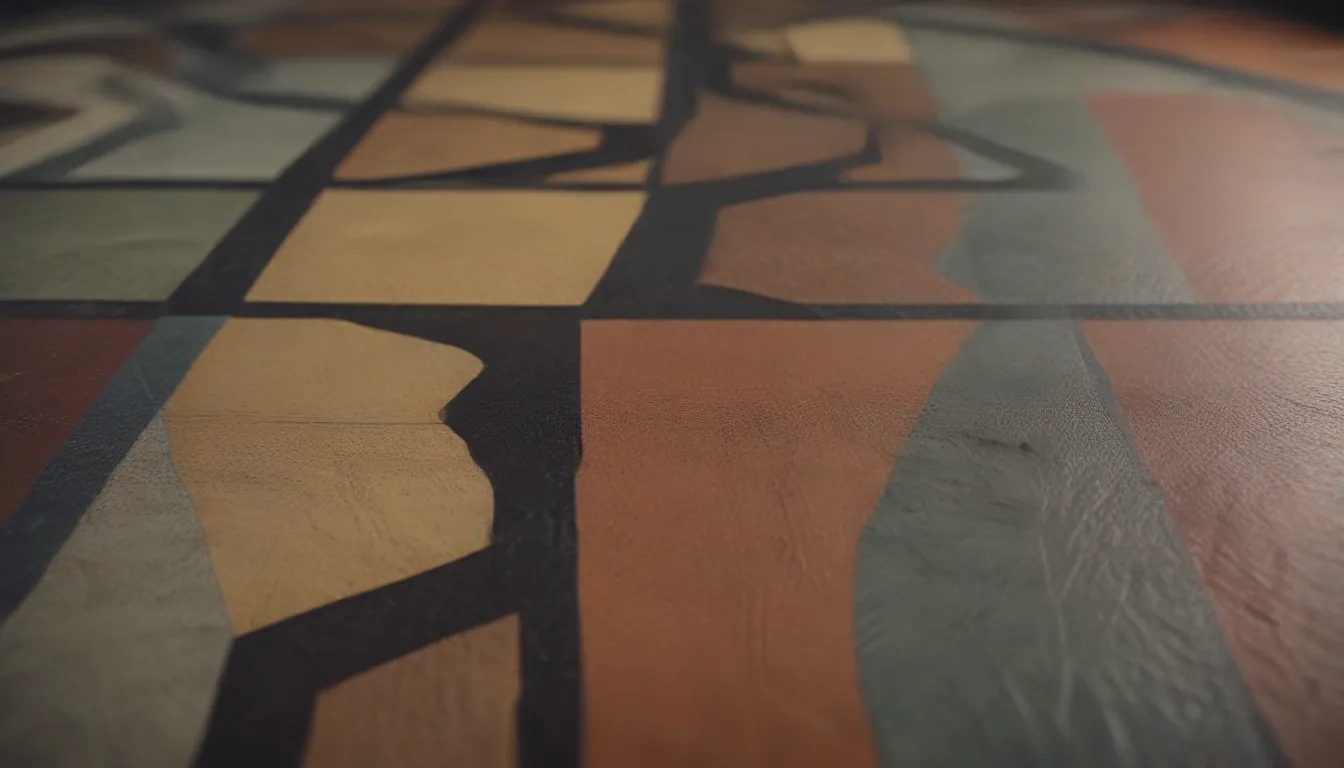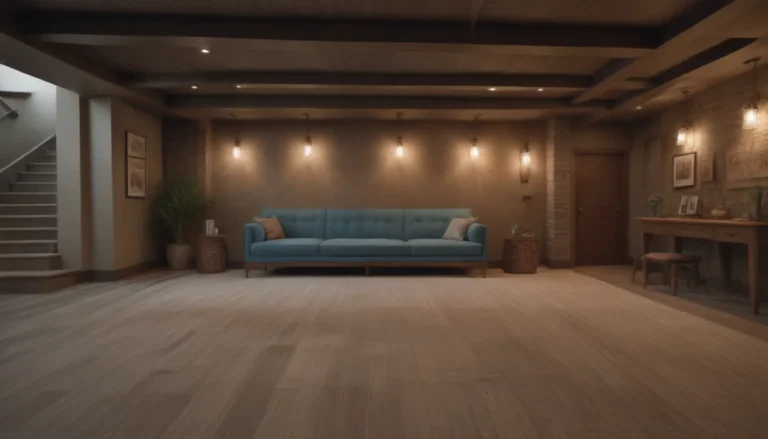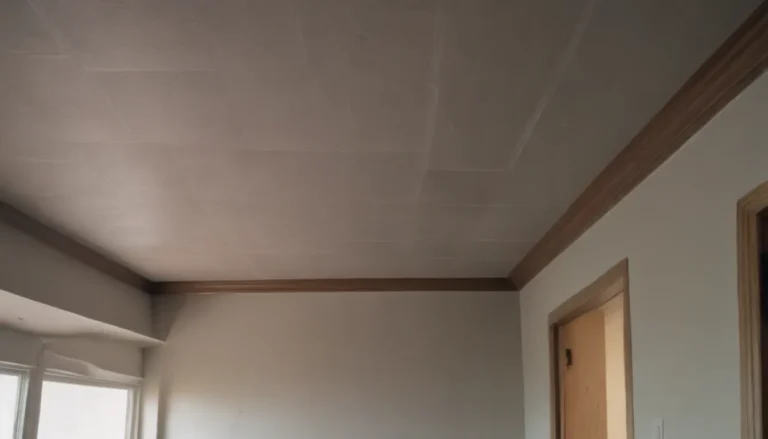Vinyl vs. Linoleum Flooring: A Comprehensive Comparison Guide

Vinyl and linoleum are two popular types of resilient flooring materials that are often confused due to their similarities. While they share some characteristics, there are key differences that set them apart. In this in-depth comparison guide, we will explore the unique features of each material to help you determine which type of resilient flooring is best suited for your needs.
Understanding Linoleum and Vinyl Flooring: Major Differences
Linoleum, the original resilient flooring material, has been around for over 160 years. Made primarily from linseed oil, cork dust, wood flour, and pine rosin, linoleum is a natural and renewable material that offers durability and adaptability. On the other hand, vinyl is a synthetic material composed mostly of PVC. While vinyl became popular in the 1960s as a cheaper alternative to linoleum, its environmental impact and chemical composition have raised concerns among consumers.
- Linoleum:
- Natural and renewable material
- Durable and adaptable
- Vinyl:
- Synthetic material
- Contains toxic chemicals and phthalate plasticizers
Appearance: Vinyl vs. Linoleum
When it comes to appearance, vinyl flooring offers a wide range of colors, patterns, and images thanks to its printed design layer. However, over time, the wear layer on vinyl flooring can wear through, revealing the PVC core layer. In contrast, linoleum has a solid, colorfast material where the color and pattern run through the entire thickness. This means that old linoleum retains its original color and pattern without significant wear.
- Vinyl:
- Vibrant design options
- Wear layer can wear through over time
- Linoleum:
- Color and pattern run through the material
- Retains original appearance for years
Water and Heat Resistance: Which is Better?
In terms of water resistance, modern vinyl is virtually waterproof and suitable for damp environments. However, linoleum, while water-resistant, requires periodic sealing to protect against moisture. Additionally, linoleum offers better heat resistance, making it more resistant to damage from hot objects like skillets or curling irons.
- Vinyl:
- Virtually waterproof
- Resistant to moisture and mildew
- Linoleum:
- Water-resistant but needs sealing
- Better heat resistance than vinyl
Care and Cleaning: Vinyl vs. Linoleum
Both vinyl and linoleum flooring are easy to maintain, with vinyl being slightly easier to care for. Vinyl can be swept, vacuumed, or mopped with a variety of detergents without fear of discoloration. Linoleum, while equally easy to care for, requires specific cleaning solutions to avoid damage to the surface.
- Vinyl:
- Easy to clean with regular sweeping or mopping
- Resistant to moisture, mold, and mildew
- Linoleum:
- Simple maintenance with periodic sweeping and vacuuming
- Requires specialized cleaning solutions for stains
Durability and Maintenance: Vinyl or Linoleum?
In terms of durability, linoleum is considered more durable than vinyl due to its solid construction throughout the thickness of the material. While both are fairly easy to maintain, linoleum requires periodic sealing to maintain its resistance to moisture and stains.
- Vinyl:
- Tough protective wear layer
- No waxing or sealing required
- Linoleum:
- More durable material
- Requires periodic sealing for maintenance
Installation: Which is Easier to Install?
When it comes to installation, both linoleum and vinyl flooring require a smooth and flat underlayment to avoid flaws showing through the surface. Vinyl tiles are popular among DIYers for their easy installation, while sheet vinyl is usually installed with a glue-down application. Linoleum, on the other hand, can be challenging to install in sheet form and is often done by professionals.
- Vinyl:
- Vinyl tiles are easy for DIY installation
- Glue-down application for sheet vinyl
- Linoleum:
- Harder to work with in sheet form
- Professional installation recommended
Cost: Vinyl vs. Linoleum Pricing
In terms of cost, vinyl flooring is generally less expensive than linoleum. Sheet vinyl can be found for as little as $.50 to $2 per square foot, while linoleum ranges from $5 to $7 per square foot for sheet material. Designer styles may carry higher costs for both materials.
- Vinyl:
- Lower cost option
- Affordable sheet and tile options
- Linoleum:
- Slightly more expensive than vinyl
- Designer styles available at higher costs
Lifespan: How Long Will Vinyl vs. Linoleum Last?
While vinyl is less expensive than linoleum, it typically has a lifespan of 10 to 20 years before showing signs of wear. On the other hand, linoleum can last 20 to 40 years or more, making it a longer-lasting option in terms of durability.
- Vinyl:
- Lifespan of 10 to 20 years
- Maintains appearance until wear through
- Linoleum:
- Lifespan of 20 to 40 years or more
- Gradually shows age over time
Environmental Considerations: Vinyl vs. Linoleum
One of the most significant differences between vinyl and linoleum is their environmental impact. Vinyl flooring is composed of toxic chemicals and is non-recyclable, posing a challenge for disposal. In contrast, linoleum is made from natural materials like linseed oil and is biodegradable, offering a more eco-friendly option for environmentally conscious consumers.
- Vinyl:
- Toxic chemicals in manufacturing
- Non-recyclable and long-lasting in landfills
- Linoleum:
- Made from natural materials
- Biodegradable and environmentally friendly
The Verdict: Which is Better – Vinyl or Linoleum Flooring?
Both vinyl and linoleum flooring have their merits as low-cost, easy-to-maintain options for residential and commercial spaces. Vinyl offers a diverse range of designs at a lower cost, while linoleum is a more durable and environmentally friendly choice. Ultimately, the decision between vinyl and linoleum will depend on your priorities and preferences regarding appearance, durability, and environmental impact.
In conclusion, whether you choose vinyl or linoleum flooring, it’s important to consider all factors such as appearance, water resistance, maintenance, durability, cost, lifespan, and environmental impact before making your decision. By weighing these factors carefully, you can select the resilient flooring material that best suits your needs and preferences.





